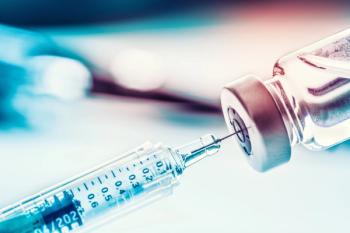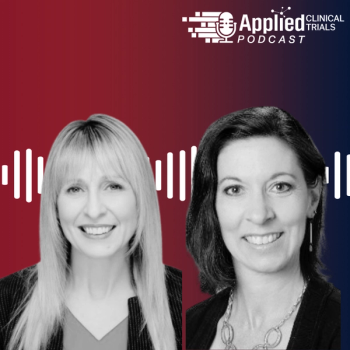
Digitally Enhanced: Janssen Drives Effort to Bring Suite of ‘Smart’ Clinical Trials into Practice in 2017
A new SaaS platform for clinical trials, soon available to all pharma companies, aims to automate clinical supply, improve patient compliance and enable better medication adherence.
A new SaaS platform for clinical trials, soon available to all pharma companies, aims to automate clinical supply, improve patient compliance and enable better medication adherence.
Equipped with extensive data from its technical pilot study and a newly-forged partnership with global information technology firm Tata Consultancy Services (TCS), Janssen Research & Development, LLC (Janssen) is steadily moving forward with plans to roll out a comprehensive “smart” clinical trial platform in late 2017.
The platform, known within Janssen as eMeds, includes an array of digital technologies that are brought together by a cohesive software program. It seeks to improve patient engagement while also transforming clinical trial medication supply and data management-with the ultimate goal of enabling more efficient trials that will allow pharmaceutical companies to bring drugs to market faster and cheaper than today.
The platform currently consists of four modules: eTracking, eLabel, eCommunication and eAdherence. Each addresses a different critical element of the clinical trial process. The platform will be externally branded as Connected Clinical Trials (CCT) and accessible to any pharma company by late 2017 in the form of a software-as-a-service (SaaS) from TCS.
As a next step, the program will scale up into a larger-scope project, known within Janssen as iSTEP (integrated Smart Trial and Patient Engagement Platform). The next phase will include additional inter-linked features such as eConsent, biometric monitoring, additional means for patient engagement, electronic patient-reported outcomes (ePRO) and electronic clinical outcomes assessment (eCOA).
In early December, Janssen and TCS are holding an informational cross-pharma meeting for drug development companies at the Janssen offices in Beerse, Belgium; more than 30 people from at least a dozen pharmaceutical companies have confirmed their attendance. The objective of the meeting is to raise overall awareness of CCT, which will begin to roll out next year, and to collect feedback on the ongoing platform development.
Answering a need for transformation
Underlying the platform’s development is an acute understanding of the pharmaceutical industry’s need to transform the clinical supply process on multiple fronts.
Digital technologies have become more and more embedded in the day-to-day life of patients and investigators, and yet are not currently integrated seamlessly into trials. At the same time, drug sponsors are striving to shorten the timeframe for bringing new drugs to patients; they’re seeking novel ways to facilitate adaptive trial designs and combine multiple studies when appropriate. Another driving factor is the regulatory environment, where regulations are rightfully becoming more stringent in the area of data quality, forcing pharmaceutical companies to rethink today’s largely manual and paper-based processes of managing clinical supplies and tracking patient health data. Not only are these processes time-consuming, but they can result in manual errors.
Further, poor control over patients’ adherence to medication dosage increases the risk for patient safety during the course of the trial. Yet existing technology tools could be leveraged help monitor adherence and communicate swiftly with patients who may be at risk.
In addition, pharmaceutical companies need a better system of understanding how clinical supplies are being managed for trials, both at the site and when patients are at home. And they seek to address the challenges of today’s paper-based booklet drug labels. To address these factors, the following four modules are in development:
- eTracking is designed to enable registration and verification of all medication kit activities at a clinical site, and help to ensure the right kit is given to the right patient.
- eCommunication seeks to provide customized, real-time patient notifications via a smartphone, as well as how-to videos and simple tools for adverse event data input. It can also facilitate personalized patient support, providing clarity in medication intake and study procedures.
- eLabel’s goal is to produce highly readable, patient-specific and all in one electronic drug labels in the patient’s native language. It also enables label flexibility, eliminates booklet printing and decreases waste.
- eAdherence is designed to ensure registration and improve verification of individual medication intake via sensor-enabled and Near Field Communication (NFC) smart medication packages. The tool is intended to help patients take the right pill at the right time, removing guesswork for medication intake and providing key data for regulatory needs. The data also can serve as an early warning to the company of potential trial drop-outs or safety risk and the opportunity to intervene faster.
All of the modules are designed to connect with one another, and with other databases. Together, they collect participant data and automatically analyze and communicate information to stakeholders, taking the place of paper-based or manual data entries.
During a trial, the data flows securely from the participant’s smartphone-which collects information from the smart packages and patient entries-to the trial site for review and confirmation. After site reviews the information, certain data fields are uploaded to the clinical database for the sponsor.
The platform works in various ways to support the patient, providing personalized messages and instructions on what he or she needs to do at specific times throughout the clinical trial. This communication, combined with real-time insight in what the patient is doing at home, offers potential opportunities for adaptive trial design, including real-time dose adjustments or, for adding, changing or dropping a treatment arm based on interim result analysis.
Technical pilot points to key platform benefits
The eMeds platform concept has been in the works at the Janssen Research and Development Operations Innovation group for more than five years. During this time, the team has consulted extensively with internal and external stakeholders from related disciplines including clinical, regulatory, supplies, privacy and others.
But to gain real-life insights on how the various modules actually work in a clinical setting, Janssen orchestrated a technical trial at a Phase I site in Antwerp, Belgium, through which it collected extensive feedback from study participants and site personnel via surveys and interviews.
The technical study included 24 healthy volunteers, both male and female, evenly representing three age groups: 18-40, 40-65 and older than 65. Volunteers included native speakers of Dutch, French and English. At the outset of the trial, participants were instructed to take one morning capsule and one evening capsule. Three dosing changes were communicated via smartphone over a 12-day period, changing both the quantity of medication as well as the time of day at which it needed to be taken (morning, noon and evening). Patients were aware that dosing changes could occur during the trial, but did not have any further details. The last dose change simulated a medication recall, with all activities occurring at home.
Because this was a technical pilot, a placebo was given; participants were not required to ingest the placebo.
The study had two objectives. First was to rigorously evaluate the various components of Janssen’s eMeds platform in a clinical setting-testing the integration of databases with the devices and modules, and evaluate real-time communications/actions among all stakeholders. Second was to gauge user-friendliness and satisfaction, from the perspectives of participants, investigators and sponsors. These “softer” measures were significant given that improving patient engagement in clinical trials is a priority for Janssen.
The trial site personnel received a site user manual, a tablet-based medication scanner and daily compliance reports that showed when each subject pushed out a pill from the smartblister package (a traditional blister package, but with an electronic circuit added on top to track when each pill is popped out). At the site, reports automatically recalculated what each participant had completed (for example, what time each pill was popped out) along with a list of actions that participants still needed to accomplish, and the time window for completing the remaining actions.
Each trial participant was given a smartphone and charger, a kit with three smartblister packs (each smartblister contained six capsules per day for four days), a quick-reference card, a participant user manual, and two satisfaction questionnaires to be completed on day five and day 12. Each participant also was interviewed individually at the conclusion of the trial. All documents were provided in the individual’s native language.
As in all trials, all participants were assigned an ID code. In addition, the participant’s language was a required field during registration. An app on the participant’s smartphone was activated and linked to the individual ID so all participant-specific material (for example, how-to videos, notifications) would be pushed to the app in the individual’s native language.
Before the trial began, all participants were trained on site in a group setting, and received hands-on individual training when the smartphone and smartblisters were provided.
Pilot’s top-rated benefits
The technical pilot was effective in meeting its objectives, shedding light on key benefits of the technology and pinpointing areas for improvement-all of which have been addressed in the latest version of the platform and related smart devices. Among the highlights:
- Compliance was strong. Despite a stringent treatment regimen, allowing only a 30-minute deviation before or after set dosage times, compliance rate was very high at 92%. The rate slightly decreased throughout the day (95% compliance in the morning, 94% at noon and 89% in the evening) and was higher for females and participants older than 40. When asked what the most important advantages were of the technology, 71% of participants said it was being notified of changes in dosing, and 38% said it was reminders for treatment intake. Some participants suggested adding an additional notification just prior to intake, rather than 15 minutes before, and repeating the eLabel update once more before the next intake.
- elabel seen as a valuable resource for drug information. Whereas paper-based drug booklets are commonly returned unopened to trial sites, participants reported that the eLabel functions were a valued resource during the trial and 92% said the updates were easy to understand. Seventy-two% of the participants proactively consulted eLabel’s content, in addition to reading eLabel smartphone notifications. Notably, the final eLabel notification was a medication recall, in which the site and sponsor were able to monitor in real-time whether patients understood the recall via information communicated from their smartblisters.
- Smartphone functions were easy to use. A full 100% of participants under 40 said the smartphone was easy to use, as well as 75% of those 40-65 years old and 50% of those older than 65. Only one participant, a women older than 65, reported not liking using smartphones. These results were significant, as only a quarter of participants (all from the youngest age group) reported having prior experience with smartphone and tablet technologies. The smartphones were used to consult dosing instructions, how-to videos, receive several types of notifications (visit reminders, for example) and uploading of smartblister data. Satisfaction with the smartphone increased with usage, as reflected in responses at the start of the trial versus at the end.
- Real-time insight has the potential to bring practical benefits for patient safety. The site could immediately interfere when participants missed or took an incorrect dose. This feature could provide immense patient safety benefits as well as pick up early signs of drop out. During the technical pilot, the sponsor was able to monitor the progress of the investigational drug activities, with real-time insight into the site and at home, reducing the need for the sponsor to make in-person visits.
- Immediate insight into patient dosing intake at home may enable adaptive trial design. Real-time changes to dosing via eLabel alerts, combined with real-time insight into whether these changes are understood and acted upon as expected, can be an important enabler for supporting patients in complex study designs, as well as adaptive trial design.
- Paperless flow achieved, date-entry errors eliminated. Databases, devices and stakeholder communications were integrated smoothly, enabling a paperless flow without any data entry during the trial. The process automatically triggered new communications and reminders based on actions, such as when medications were removed from the smart packages.
- For participants, uploading data from smartblister to smartphones was a smooth process. No one indicated that data upload onto the smartphone took too long, with 54% saying it was very quick and the rest saying it was acceptable. All participants reported it was easy to find the correct location on the smartblister package to upload data. (The location was indicated with an icon that appeared on both the package and smartphone.) Eighty-three% said the whole uploading process was very easy or easy, which is significant given that the majority of participants did not consider themselves experienced with smartphones.
- Sponsor and site personnel feedback was positive. The site rated the devices, applications and reports as user friendly, and could achieve 100% remote access to participant’s at-home compliance data. Sponsor had 100% remote access in all activities happening at the site and with the participant, so no in-person visits were needed for reviewing medication-related activities. All stakeholders also said they appreciated the convenience and usability of the apps and quick reference cards.
Pilot conclusions, next steps
Site personnel, sponsor personnel and participants were overall very positive about their experience with the smartphone and smartblister. They noted ease-of-use, clarity and frequency of smartphone notifications, ease of uploading data with smartphone, ease of pushing out capsules, layout of the capsules and on-site training.
But feedback also brought to light age-related differences. Participants under 65 generally rated all steps of the process as easier and reported a better experience with their smartphones, while older participants were more compliant. Younger participants also commented that the smartphone and smartblister package seemed too large and the hands-on individual training was too long, while the older group said the contrary.
When participants were asked what they thought was the biggest advantage, they ranked “being notified of changes in dosing” as the most important. This was followed by “reminder for medication intake” and “my doctor has insight into my medication intake.”
Janssen is now selecting pilots (from among Janssen’s clinical trials) to actively deploy and implement all the different modules of the platform by end-of-year 2017. Once the platform is released, it will be available for other pharmaceutical companies to use.
Mainstream technology exists today to improve clinical trials in many ways, from tracking adherence data to communicating seamlessly with patients in ways that can help the trial become more flexible and potentially improve patient safety.
As an industry, we must work to reduce the complexities of clinical trials, from labeling to protocol compliance. The open-format Connected Clinical Trials platform will set us on the path toward this goal, with more engaged trial participants and stronger regulatory data to support innovative new pharmaceutical products. We are on an exciting journey, moving the clinical trial into the digital world, where we will be able to simplify and improve many aspects of the trial while also enhancing important relationships and maximizing the input of patients.
Hilde Vanaken, Ph.D., is director of the R&D Operations Innovation Department at Janssen Research & Development, LLC. She also is the TransCelerate eLabel Core Team Member and Transcelerate eConsent Workstream Leader.
Newsletter
Stay current in clinical research with Applied Clinical Trials, providing expert insights, regulatory updates, and practical strategies for successful clinical trial design and execution.






.png)



.png)



.png)
.png)
